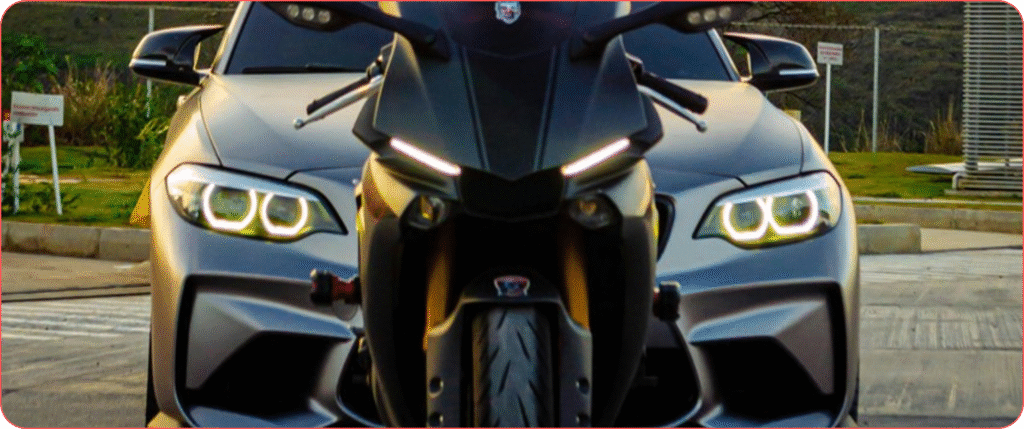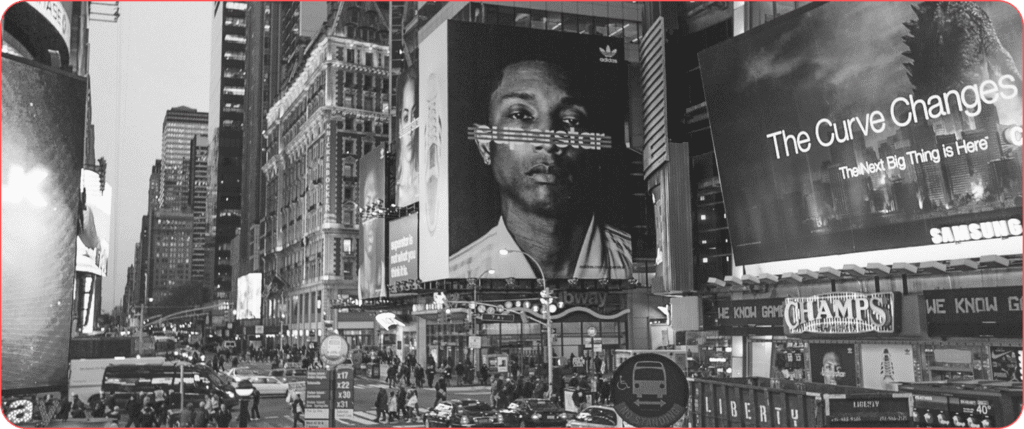Welcome, fellow auto enthusiasts and industry observers, to our latest pit stop in the dynamic world of Bangladesh’s automobile market. It’s 2025, and the landscape of both 4-wheelers and 2-wheelers continues to evolve, shaped by powerful economic currents, shifting consumer desires, and a groundbreaking policy change that’s sending ripples across the motorcycle segment. As an industry expert, I’m here to give you an unfiltered look at what’s truly happening on Bangladesh’s roads, from brand battles to buying behaviors, and what the future holds for this resilient sector.
The Great Divide: 2-Wheelers vs. 4-Wheelers
Bangladesh’s automobile story is distinctly bifurcated: the 2-wheeler segment is a bustling highway of mass mobility, now revving up with new excitement, while the 4-wheeler market represents a growing, yet more exclusive, aspiration.
2-Wheelers: The Undisputed King of Commute, Now with More Roar!
Motorcycles and scooters are more than just vehicles in Bangladesh; they are lifelines. For millions, they represent the most affordable, fuel-efficient, and practical way to navigate the country’s often-congested urban arteries and intricate rural paths. This segment has seen phenomenal growth, though 2024 proved to be a challenging year.
- Market Reality Check (2024): After hitting peak sales of over half a million units in 2021 and 2022, the 2-wheeler market experienced a significant contraction in 2024, plummeting to 392,175 units – an 18.4% decline. This downturn was largely driven by a combination of factors: severe currency depreciation, double-digit inflation eroding purchasing power, and high interest rates on consumer loans.
- The Affordability Imperative: Despite the recent slump, the core demand for affordable mobility remains strong. Two-wheelers fulfill essential commuting needs for lower and middle-income segments, as well as enabling the booming gig economy (food delivery, ride-sharing).
- Youthful Momentum: Bangladesh’s young demographic (median age 27.3 years) continues to drive demand, seeking independence and convenience for commuting, leisure, and new economic opportunities.
- Local Manufacturing Prowess: A significant triumph for Bangladesh is that over 80% of 2-wheelers sold are now locally manufactured or assembled. This push for self-sufficiency is a cornerstone of government policy.
The Game Changer: 350cc (and up to 375cc) Motorcycles Hit the Market!
Perhaps the most electrifying development in 2025 for the 2-wheeler segment is the relaxation of the long-standing engine capacity (CC) limit. After years of lobbying and debate, the Ministry of Home Affairs granted final approval in January 2025 to allow motorcycles up to 375cc for locally manufactured/assembled models. Imported bikes, however, still remain capped at 165cc.
This is a monumental shift. Previously, Bangladesh was one of the few countries with such stringent CC restrictions. Now, the roads are opening up to a new breed of powerful machines, transforming rider experiences and market dynamics. Brands like Royal Enfield (with models like Bullet 350, Meteor 350, Hunter 350, and Classic 350, whose local production by IFAD Group began earlier), Honda (H’ness CB350), and Jawa (Perak) are already making their presence felt, and other major players like TVS, Hero, Suzuki, Yamaha, and Bajaj are poised to bring their higher CC offerings to the local market.
4-Wheelers: Aspiration on Four Wheels, Facing Headwinds
While smaller in volume, the 4-wheeler market (private cars, microbuses, commercial vehicles) reflects rising prosperity and evolving lifestyles. It’s a segment primarily influenced by increasing per capita income and urbanization.
- A Slowed Pace in 2024: The overall vehicle market, including 4-wheelers, reached a 10-year low in terms of registrations in 2024, with fewer than 3.08 lakh units (total vehicles) registered. This mirrors the challenges faced by 2-wheelers, primarily due to import restrictions, foreign exchange scarcity, and reduced affordability.
- The New vs. Reconditioned Divide: Historically dominated by reconditioned cars (imported used vehicles, mostly from Japan), the market for brand-new cars, while still a small fraction, is slowly gaining traction among the upper-income segment. On platforms like Bikroy, 59% of car listings are reconditioned, 40% are used, and only 1% are brand new. This highlights the continued importance of value for money.
- The SUV Surge: Mirroring global trends, SUVs are increasingly popular, offering versatility and perceived robustness suitable for diverse terrains. Sedans, however, remain a popular choice for their fuel efficiency and family suitability.
The Battle for Dominance: Brand-wise Market Share (Last 5 Years)
Tracking brand performance over the past five years reveals a dynamic and highly competitive landscape, now with the added dimension of the new CC limit.
2-Wheelers: A Shifting Power Balance (Now with More Premium Players)
The 2-wheeler segment is a constant tussle for supremacy, and the 350cc bikes will undoubtedly reshape its top tier.
- Bajaj Auto: Has historically held the lion’s share and remains a market leader, largely due to its strong brand loyalty and extensive dealer network. However, 2024 saw Bajaj’s sales drop by 10%, reducing its market share to 21.8%, facing intense competition. Their response in the higher CC segment will be crucial.
- Hero Motorcycles: A true challenger, Hero recorded significant 19% growth in 2024, securing a 14.8% market share. Their focus on affordable, fuel-efficient models has resonated strongly. They also have higher CC models that could enter.
- Suzuki and Yamaha: These Japanese giants are aggressively expanding their footprint. In 2024, both showed commendable growth (Suzuki +8%, Yamaha +11%), each securing an impressive 19.3% market share, placing them in a strong position to introduce higher-performance models.
- Honda: Maintained a stable, albeit slightly declining, position in 2024 with a 15.2% market share. Honda’s local manufacturing plant is a key asset, and their H’ness CB350 is already making waves, establishing their presence in the premium segment.
- TVS Auto Bangladesh: Faced the steepest decline in 2024, with sales falling 35%, highlighting the vulnerability of some brands to economic pressures. Their strategy for higher CC bikes will be critical for recovery.
- Royal Enfield, Jawa, and other entrants: The arrival of these brands, focusing exclusively on the higher CC segment, will carve out a new niche, attracting enthusiasts and long-distance riders. Their initial market share will be small but influential.
- Local Brands (Runner, Walton, RoadMaster): These domestic players are vital, contributing significantly to local content and catering to various price points. Runner has already produced higher CC bikes for export and is well-positioned to introduce them locally.
4-Wheelers: Toyota’s Enduring Reign
The 4-wheeler market, particularly for passenger cars, continues to be largely dominated by a few established names.
- Toyota: Unquestionably the undisputed leader. Its reputation for reliability, durability, high resale value, and readily available spare parts means Toyota accounts for a staggering 86% of all car advertisements on major platforms like Bikroy. Its dominance is a testament to consumer trust built over decades.
- Honda, Nissan, Mitsubishi, Hyundai: These brands follow Toyota, holding smaller but significant market shares. Hyundai, through its collaboration with Fair Technology, is making strides in local assembly, a key strategy for increasing its presence.
- Proton (PHP Automobiles): PHP Automobiles has been assembling Proton cars since 2017, aiming to provide a compelling alternative to imported reconditioned vehicles.
- Tata: While more prominent in commercial vehicles (pickups assembled by Nitol-Niloy group), Tata also has plans for passenger vehicle manufacturing, indicating future expansion.
Changing Tides: Market Trends and Customer Buying Behavior (2025)
The Bangladeshi automobile market is a mirror reflecting the nation’s economic realities and aspirations, now also influenced by the new possibilities of higher-capacity motorcycles.
Key Market Trends:
- Economic Headwinds (Persistent): 2024 highlighted the significant impact of economic instability, including currency depreciation, high inflation, and foreign exchange shortages. These factors directly translated into higher vehicle prices and reduced purchasing power, causing sales to plunge. While some recovery is hoped for in 2025, caution remains.
- Accelerated Local Production: The government’s push to make Bangladesh an “automobile manufacturing hub by 2030” is leading to increased local assembly and manufacturing across both segments. This strategy aims to reduce import reliance, save foreign currency, and create jobs.
- The “Premium” Motorcycle Segment: The introduction of 350cc bikes creates a distinct premium segment within 2-wheelers, catering to performance enthusiasts, long-distance touring, and those seeking a more powerful or prestigious ride. This will diversify the market beyond commuter and entry-level sports bikes.
- The Used Car Reality (Continued Dominance): With new car prices soaring, the used and reconditioned car market remains crucial for the middle class. The ability to find better value in these segments will continue to define much of the 4-wheeler market.
- Emerging Green Mobility: While still in its infancy, interest in Electric Vehicles (EVs) and hybrid cars is growing. Lower tax rates on these vehicles, coupled with rising fuel costs and environmental awareness, are slowly nudging the market. However, the government needs a robust regulatory framework to ensure quality and prevent the influx of substandard EVs.
- Rise of Digital Platforms: Online platforms for buying and selling vehicles are gaining prominence, offering transparency and wider choice, influencing how consumers research and purchase.
- Ride-Sharing’s Dual Impact: The widespread adoption of ride-sharing apps (Uber, Pathao) offers convenient alternatives to private ownership for some, particularly in urban areas. Simultaneously, it creates earning opportunities for individuals with personal vehicles, indirectly influencing sales of certain segments (e.g., fuel-efficient sedans and motorcycles).
Customer Buying Behavior:
- Value-Driven Decisions (Still Paramount): Affordability and value for money remain paramount across all segments, but particularly outside the new premium motorcycle and luxury car segments. Consumers meticulously weigh initial cost, fuel efficiency, maintenance expenses, and resale value.
- Reliability Reigns Supreme: Brands with a proven track record of reliability and durability continue to command consumer trust. This explains the enduring popularity of Japanese brands in 4-wheelers and established Indian brands in 2-wheelers.
- The “Upgrade” Mentality (New for 2-Wheelers): The availability of 350cc motorcycles will foster an “upgrade” culture among existing 150-165cc riders who crave more power, better highway performance, and enhanced features. This could lead to a healthy second-hand market for lower CC bikes.
- After-Sales Service Matters: The availability of genuine spare parts and efficient, accessible after-sales service networks is a critical determinant. A strong service ecosystem fosters loyalty, especially for higher-capacity motorcycles which may require specialized servicing.
- Feature-Consciousness and Safety: As disposable incomes grow, so does the demand for modern features, advanced safety technologies (like ABS, traction control), and connectivity options. The higher speeds of 350cc bikes will put a greater emphasis on safety features.
- Financing as a Catalyst: The increasing accessibility of flexible financing and loan options from banks and non-banking financial institutions has democratized vehicle ownership, making it attainable for a broader segment of the population.
- Social Status and Aspiration (Elevated for 350cc): Owning a personal vehicle, particularly a new 4-wheeler or now a high-capacity 350cc motorcycle, is a significant symbol of social status and success, driving aspirational purchases. The “big bike” status will be a strong draw.
The Art of Influence: Current Marketing Practices
Marketing in Bangladesh’s auto industry is a blend of traditional outreach and modern digital engagement, now adapting to showcase the new, more powerful 2-wheeler options.
- Integrated Campaigns: Brands employ a mix of traditional media (TV, print, billboards) for mass reach, complemented by targeted digital campaigns (social media, online ads, content marketing) to engage tech-savvy audiences. Expect more “lifestyle” marketing for 350cc bikes.
- Experiential Marketing: For higher CC motorcycles, test rides, riding events, and community building (e.g., owner groups) will become crucial to allow potential buyers to experience the performance and build a sense of belonging.
- Showroom Experience Focus: Dealerships are investing in creating premium showroom experiences, offering test drives, detailed consultations, and streamlined financing processes. Dedicated sections or showrooms for premium bikes might emerge.
- Attractive Promotions: Seasonal discounts, festival offers (e.g., Eid), low down payment schemes, and exchange bonuses are common strategies to stimulate sales.
- Strategic Partnerships: Collaborations with financial institutions are crucial, enabling accessible loan packages and making purchases feasible for more customers.
- Emphasis on After-Sales: Companies are increasingly highlighting their robust after-sales service networks, availability of genuine parts, and skilled technicians to build trust and ensure customer loyalty, particularly vital for complex higher-capacity engines.
- Localized Messaging: Campaigns are increasingly tailored to local cultural nuances and economic realities, emphasizing fuel efficiency for commuters or performance, luxury, and features for premium segment buyers.
What Really Influences the Buying Decision?
It’s a complex web of factors beyond the sticker price:
- Economic Stability: The overall economic health of the country directly impacts purchasing power. The recent slowdown in sales directly reflects economic pressure.
- Government Policy: Import duties, registration fees, and incentives for local manufacturing or green vehicles significantly influence pricing and market dynamics. The 375cc rule is a prime example of policy shaping the market.
- Fuel Prices: Volatile global fuel prices directly impact running costs, making fuel efficiency a top priority. For 350cc bikes, performance might outweigh ultimate fuel economy for some buyers.
- Road Infrastructure: Improving road networks, including expressways, gradually encourages vehicle ownership and longer journeys, making higher CC bikes more practical.
- Peer Influence & Social Norms: The aspirational aspect of vehicle ownership, influenced by peers and community, plays a subtle but significant role. The “cool factor” of a 350cc bike will be strong.
- Resale Value: The expected resale value of a particular model or brand is a key consideration for many buyers, influencing their initial purchase choice. The 350cc introduction might shift resale values in lower CC segments.
- Rider Skill & Licensing: The new CC limit will likely spark discussions about more advanced rider training and potentially tiered licensing for higher-capacity motorcycles to ensure safety.
The Road Ahead: Trends and Predictions for Bangladesh’s Automobile Industry
Looking into the crystal ball, Bangladesh’s automobile industry is set for continued transformation, navigating both challenges and immense opportunities, with the 350cc revolution as a central theme.
- Strong Resurgence in 2-Wheelers: While 2024 was tough, the 350cc allowance, combined with fundamental demand drivers, will invigorate the 2-wheeler market. We will see a diversification of products, with premium models gaining traction alongside the established commuter segment.
- Niche Growth for 350cc+: The higher CC segment will grow steadily, initially driven by enthusiasts and then by riders seeking better long-distance capabilities and comfort. It will become a significant, albeit smaller, segment within the overall 2-wheeler market.
- Steady Ascent for 4-Wheelers: The growing middle and upper-middle class will ensure a consistent increase in 4-wheeler demand. The market for passenger cars is still projected to nearly double by 2025 (as per earlier projections, indicating growth from a lower base).
- Localization is Paramount: The push for domestic manufacturing will intensify across both segments, including higher-capacity motorcycle engines. This will lead to more competitive pricing, a greater variety of locally assembled vehicles, and potentially the export of components or even finished vehicles in the long run.
- The Green Wave is Coming: While full EV adoption faces infrastructure hurdles, hybrid vehicles will likely bridge the gap, gaining significant traction due to fuel efficiency and environmental benefits. Government incentives and a clear regulatory framework will accelerate this transition. We could see more local EV assembly.
- Digitalization Deepens: Online platforms will continue to play an increasingly central role in research, price comparison, and even vehicle sales, pushing traditional dealerships to integrate digital strategies.
- Enhanced After-Sales and Service for High CC: As more complex 350cc bikes hit the road, the demand for high-quality after-sales service, genuine spare parts, and skilled technicians for these specific models will increase, pushing companies to invest further in their service networks.
- Focus on Rider Training and Safety: The higher speeds and performance of 350cc bikes will inevitably bring more focus on rider training, road safety campaigns, and potentially revised licensing categories to ensure responsible riding.
The journey of Bangladesh’s automobile industry is one of ambition, adaptation, and resilience. As the nation marches towards its development goals, mobility will remain a critical enabler, now with the added thrill of higher-capacity motorcycles. It’s truly an exciting ride to observe!
C.Basu
Bibliography
- Vehicle sales plunged in 2024 – The Daily Star. (April 27, 2025). Available at: https://www.thedailystar.net/business/economy/news/vehicle-sales-plunged-2024-3880836
- Bangladesh 2024. Motorcycles Market Is Rolling Down Hit By Inflation, Depreciation And Riots. MotorcyclesData.com. (March 30, 2025). Available at: https://www.motorcyclesdata.com/2025/03/30/bangladesh-motorcycles/
- The Car Market in Bangladesh: Data & Insights for 2025 – Garirbazar.com. Garirbazar.com. (June 6, 2025). Available at: https://www.garirbazar.com/en/posts/bangladesh-car-market-2025-trends-prices-insights
- Bike CC Limit in Bangladesh 2025: Official Guidelines, Proposals! – BanglarBike. (March 29, 2025). Available at: https://banglarbike.com/bike-cc-limit-in-bangladesh-2025-official-guidelines-proposals/
- Ministry of Home Affairs approved 350cc bike on Bangladesh – MotorcycleValley. (September 9, 2023). Available at: https://www.motorcyclevalley.com/news/ministry-of-home-affairs-approved-350cc-bike-on-bangladesh/
- Bangladesh opens doors for motorcycles up to 350cc, ushering in a new era – BikeBD. (January 5, 2025). Available at: https://www.bikebd.com/blog/motorcycle-industries-of-350cc
- With The Introduction Of 350cc Bikes In Bangladesh, Which Second-Hand Bikes Might See A Decrease In Price? (January 20, 2025). Available at: https://www.bikebd.com/blog/with-the-introduction-of-350cc-bikes-in-bangladesh-which-second-hand-bikes-might-see-a-decrease-in-price
- Top 5 350cc Cruiser Bikes In Bangladesh | BikeBD (Jun 2025). (June 17, 2025). Available at: https://bikebd.com/info/top-5-350cc-cruiser-bikes-in-bangladesh
- Bangladesh Two Wheeler Market Size, Share and Forecast | Report 2030 – TechSci Research. TechSci Research. Available at: https://www.techsciresearch.com/report/bangladesh-two-wheeler-market/3188.html
- Motorcycle sales hit six-year low – Industry Insider. (January 19, 2025). Available at: https://industryinsiderbd.com/motorcycle-sales-hit-six-year-low/
- Bangladesh Used Car Market Size & Share Analysis – Industry Research Report. Mordor Intelligence. (February 14, 2024). Available at: https://www.mordorintelligence.com/industry-reports/bangladesh-used-car-market
- Bangladesh to emerge as automobile industry hub by 2030: Humayun | The Business Standard. The Business Standard. Available at: https://www.tbsnews.net/economy/industry/bangladesh-emerge-automobile-industry-hub-2030-humayun-210970
- The Evolution of the Bangladesh Bike Industry – Bajaj Auto. Bajaj Auto. (April 4, 2025). Available at: https://www.bajajauto.com/en-bd/blogs/blog-evolution-bike-industry
- Vehicle registration drops 15% to a decade low in 2024 | The Business Standard. The Business Standard. (January 3, 2025). Available at: https://www.tbsnews.net/bangladesh/vehicle-registration-drops-15-decade-low-2024-1033676


